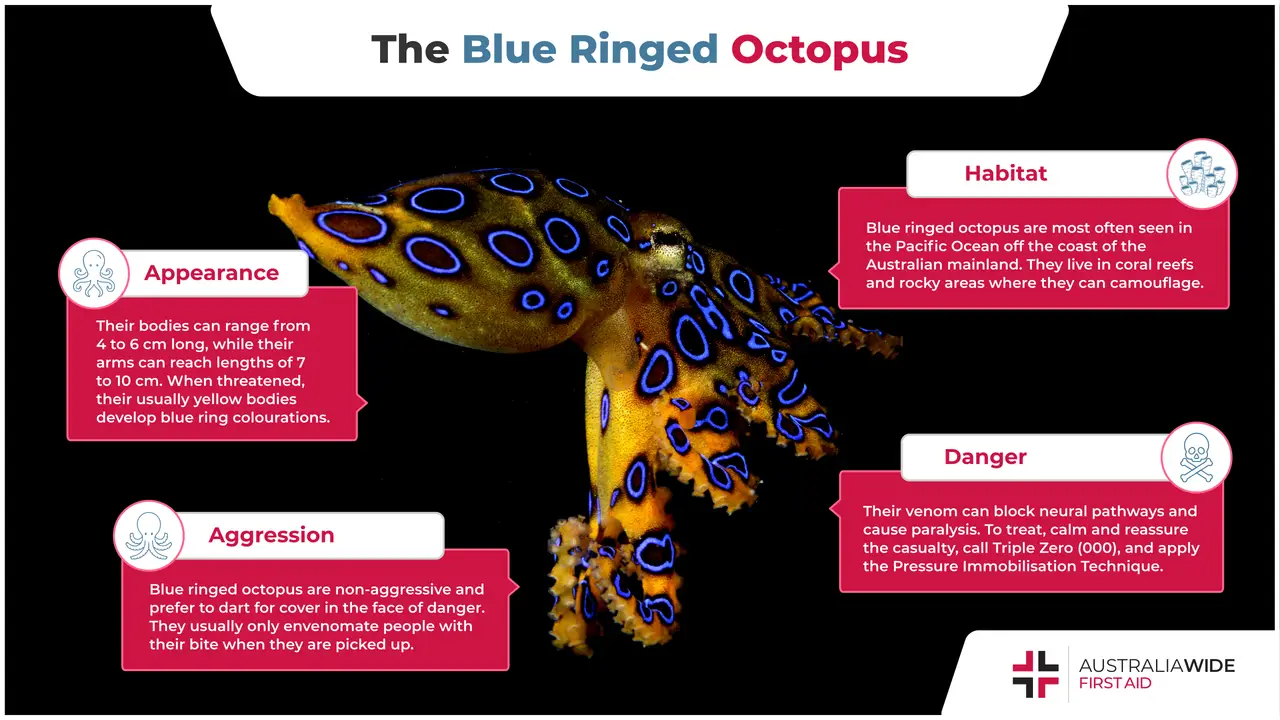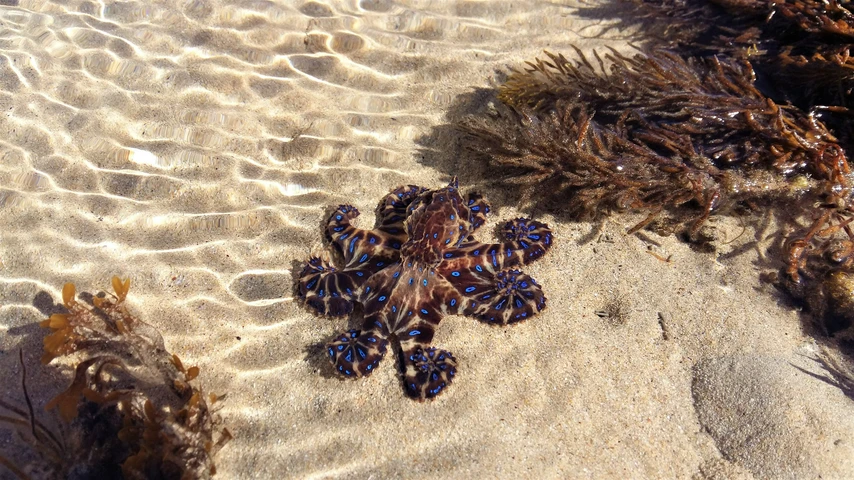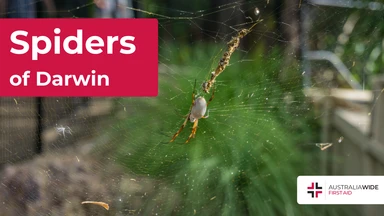Deadly Marine Life: The Blue Ringed Octopus


The bite from a blue ringed octopus is painless and potentially lethal. Prompt and appropriate application of first aid may prevent serious injury and death.
The blue ringed octopus is a small species that lives off the Australian coast in the Pacific Ocean. Although they exist off the coast year-round, they are more often encountered in summer, when humans and octopuses seek out shallow tide pools. Summer is the mating season for the blue ringed octopus, so they may be more present.
Despite their small size, the blue ringed octopus is highly venomous. They produce a neurotoxin called tetrodotoxin and distribute it through their bite. The Ocean Conservancy says that each octopus holds enough venom to kill 26 humans. Although bites from this small species are rare, knowing how to identify and treat them may improve survival.
The blue ringed octopus belongs to a category of cephalopods. Their name comes from the iridescent blue colouration they generate on the surface of their body when threatened. According to the Australian Institute of Marine Science, the blue ringed octopus is classified as follows: phylum Mollusca; class Cephalopoda; order Octopoda; family Octopodidae; and genus Hapalochlaena.
According to the Natural History Museum, there are four subspecies of blue ringed octopuses: the greater blue ringed octopus, the southern blue ringed octopus, the blue lined octopus, and a fourth rare subspecies known by its scientific name as Hapalochlaena nierstraszi.
Although they are most often seen in the Pacific Ocean off the coast of the Australian mainland, their presence has also been documented in the Indian Ocean and off the coast of Tasmania.
They live on coral reefs and in rocky areas where they can safely camouflage and hide from predators. Sometimes, particularly during mating periods, they are found in shallow areas, but they can also be found at great depths. They primarily eat crustaceans and small fish, paralysing their prey using venom delivered via a bite.
The two most encountered species in Australia are the southern blue ringed octopus and the blue lined octopus. Their key identifying characteristic is the blue ring colouration on their bodies. When in a calm, non-threatened state, the octopuses can appear yellow, brown, and green.
The southern blue ringed octopus is the largest of the four identified subspecies at approximately 22 centimetres long. It can display 40-50 blue rings and is found at depths of up to 50 metres.
The blue lined octopus is slightly smaller than the southern blue ringed octopus and has only been found at depths of 20 meters. It is characterised by blue, iridescent lines on its mantle.

When attacking prey or threatened, the blue ringed octopus releases venom through its bite, which is usually painless. The toxin it secretes is a neurotoxin called tetrodotoxin. It works by blocking neural pathways causing paralysis of musculature.
The number of documented deaths from the bite from blue ringed octopuses varies by source. The Ocean Conservancy reports that there have been no deaths. Still, other sources, like the Australian Institute of Marine Science and the Natural History Museum, indicate that there have been several human deaths from this species. What is evident is that the venom it possesses is highly lethal for both humans and its prey. Any encounter with this species should be taken seriously.
Symptoms after an encounter with a blue ringed octopus will be evident within minutes and increase rapidly in severity: first, nausea, vomiting, and numbness. Then, loss of motor skills, vision loss, and respiratory failure. Paralysis, respiratory failure, and death can occur 30 minutes after a bite.
Treatment includes:
Although rare, a bite or encounter with a blue ringed octopus is potentially lethal. Their bright, intriguing colouration may entice small children to examine them closer. Surfers and beach walkers may inadvertently step on one. If you or someone else experiences a rapid onset of severe medical symptoms during or after wading in coastal waters, consider the bite of a blue ringed octopus as a source of injury.
To learn more about our First Aid Courses, check out Australia Wide course catalogue. You may also find the following first-aid articles helpful.

March 11, 2025
Darwin, the tropical capital of Australia’s Northern Territory, is home to a rich diversity of wildlife - including an impressive array of spiders. From the sprawling webs of golden orb-weavers to the cryptic camouflage of trapdoor spiders, these arachnids play a vital role in the local ecosystem. While some may inspire fear, the majority are harmless and even beneficial, helping to control insect populations.

September 4, 2024
Cat bites, while often underestimated, can lead to serious health complications if not treated promptly and properly. Cats' mouths harbour a variety of bacteria that can cause infections in humans.

April 1, 2024
Encounters with wildlife can often be thrilling, but when it comes to the creature known as the drop bear, the experience can quickly turn dangerous. A sharp increase in recent attacks prompts the need for understanding proper first aid procedures in case of an attack.